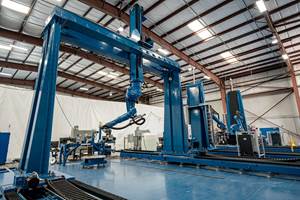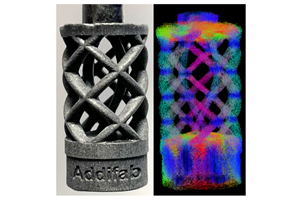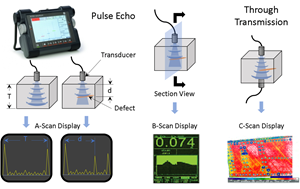A convergence of market outlooks
At the recent ┬╠├▒¤ÎĂŮ Expo, held Oct. 28-30 in Schaumburg, Ill.
At the recent ┬╠├▒¤ÎĂŮ Expo, held Oct. 28-30 in Schaumburg, Ill., our four keynote speakers discussed current and potential composites use in their respective markets: aerospace, automotive, wind and infrastructure. Their revelations and insights were both illuminating and promising.
Peter Wu, VP and chief scientist at Spirit AeroSystems Inc. (Wichita, Kan.), reported that his firm, despite the recession, has seen no slowdown in activity as it works to fine-tune production of the Boeing 787ÔÇÖs composite forward fuselage section and prepares to begin work on the composite center fuselage section and wing spars of the forthcoming Airbus A350 XWB. Noting that Spirit has $28.2 billion (USD) in backlogged orders, he predicted that the company will be busy for some time. Wu emphasized that Spirit is evaluating many emerging composites technologies, including out-of-autoclave processing, fast nondestructive inspection techniques and new simulation software, and made it clear that Spirit is actively seeking technical partners.
On the automotive front, Jim deVries, staff technical specialist and manager of the Manufacturing Research Dept. at the Ford Research Laboratory (Detroit, Mich.), discussed the role of composites in the evolving automotive market. He focused first on the perfect storm that has enveloped the auto industry in the last 18 months: Record-high oil prices, the recession and its impact on buyers, and new, more stringent CAFE (corporate average fuel economy) standards. Lightweighting of cars, he noted, is critical, and if auto OEMs are to survive, greater fuel efficiency is mandatory. While traditional automotive composites have been good, he said, they wonÔÇÖt be good enough to meet future weight targets ÔÇö the competition is no longer steel, but aluminum. He believes natural fiber-reinforced composites will expand, primarily in interior applications, and low-density sheet molding compounds (SMC) reinforced with carbon fiber in a low-cost matrix will find application in the future. But, given the current carbon fiber cost structure, deVries said Ford favors aluminum over carbon fiber and glass fiber SMC. If the cost of industrial-grade carbon fiber drops to $5 per lb, he noted, then it could become competitive, at least at higher production volumes. Yet, deVries also posed a tough question: If the cost of carbon fiber wasnÔÇÖt an issue, would carbon fiber suppliers be able to meet the resulting automotive demand that, for $5/lb carbon fiber, could be as high as 75 million lb (~34,000 metric tonnes) per year?
Stephen Nolet, principal engineer and director of innovation at wind turbine blade manufacturer TPI Composites (Scottsdale, Ariz.), discussed the U.S. goal to provide 20 percent of its power by 2030 from wind sources, noting the challenges of federal policy instability, transmission issues, tower siting and cost/reliability concerns. Nolet set out a series of benchmarks that he believes must be achieved by the wind industry to meet the ÔÇťmassiveÔÇŁ 20 percent goal: a 10 percent reduction in capital costs; a 15 percent increase in turbine capacity factor; and a 35 percent reduction in operations and maintenance costs. He explored the need for longer, lighter blades and the challenges of wind shear, noting blade technologies designed to mitigate wind load variations, such as aeroelastic tailoring and flat-back airfoils. Although carbon fiber has a role to play in blades, Nolet, like deVries, sees cost as the largest mitigating factor. On the maintenance side, Nolet noted the importance of embedded sensors in blades that can signal real or potential failure ÔÇö TPI has evaluated piezo sensors, crack gauges and wireless load cells. Asked about the potential to automate wind blade production, Nolet was cautionary. He believes automation ÔÇťwill follow design,ÔÇŁ and that fabric placement via automated gantry system (as proposed by some machinery designers) is too expensive. However, he sees automation as critical in fabric cutting and adhesive application.
The final keynoter, Dr. Habib Dagher, director of the AEWC Advanced Structures and Composites Center at the University of Maine (Orono, Maine), reviewed the CenterÔÇÖs work with a new composite technology for bridge structures. Called ÔÇťbridge in a backpack,ÔÇŁ it features structural fiber tubes that can be folded to duffel-bag size for transport, then inflated at the work site and infused with resin on a portable frame to form lightweight hollow arches. Anchored side-by-side in footings on opposite sides of the span, the arches are filled with concrete and covered with composite panels that support the roadway. Dagher says 50 percent of U.S. bridges now in need of replacement span 70 ft/21m or less, making them good candidates for this technology. Moreover, the new technology can compete on a first-cost basis with concrete and steel, as evidenced by the latest installation in Maine. Six Maine bridges will be replaced with this technology next year. Notably, DagherÔÇÖs group has attracted the interest of U.S. Secretary of Transportation Ray LaHood and President Barack ObamaÔÇÖs ÔÇťGreen Cabinet.ÔÇŁ
Related Content
Innovation in ultrasonic inspection and nondestructive testing
With increasingly complex structural components working their way into aerospace programs, the need for versatility in inspection and testing capabilities is growing.
Read MoreXnovo Technology, Exciscope introduce X-ray tensor tomography technique
Through a strategic partnership, the companies introduce the FiberScanner3D module, dedicated to bringing more rapid, reliable and robust fiber structure characterization methods to lab settings.
Read MoreCactuX in-situ BOX simulates real-life conditions of composite samples during CT analysis
The autonomous in-situ BOX combines the environment temperature control function and power supply function, enabling new possibilities for material and internal structure research.
Read MoreNondestructive inspection methods available to composites manufacturers
An overview of composite laminate inspection techniques ranging from manual testing methods to more advanced, noncontact options.
Read MoreRead Next
Scaling up, optimizing the flax fiber composite camper
Greenlander’s Sherpa RV cab, which is largely constructed from flax fiber/bio-epoxy sandwich panels, nears commercial production readiness and next-generation scale-up.
Read MoreCeramic matrix composites: Faster, cheaper, higher temperature
New players proliferate, increasing CMC materials and manufacturing capacity, novel processes and automation to meet demand for higher part volumes and performance.
Read MoreNext-gen fan blades: Hybrid twin RTM, printed sensors, laser shock disassembly
MORPHO project demonstrates blade with 20% faster RTM cure cycle, uses AI-based monitoring for improved maintenance/life cycle management and proves laser shock disassembly for recycling.
Read More








